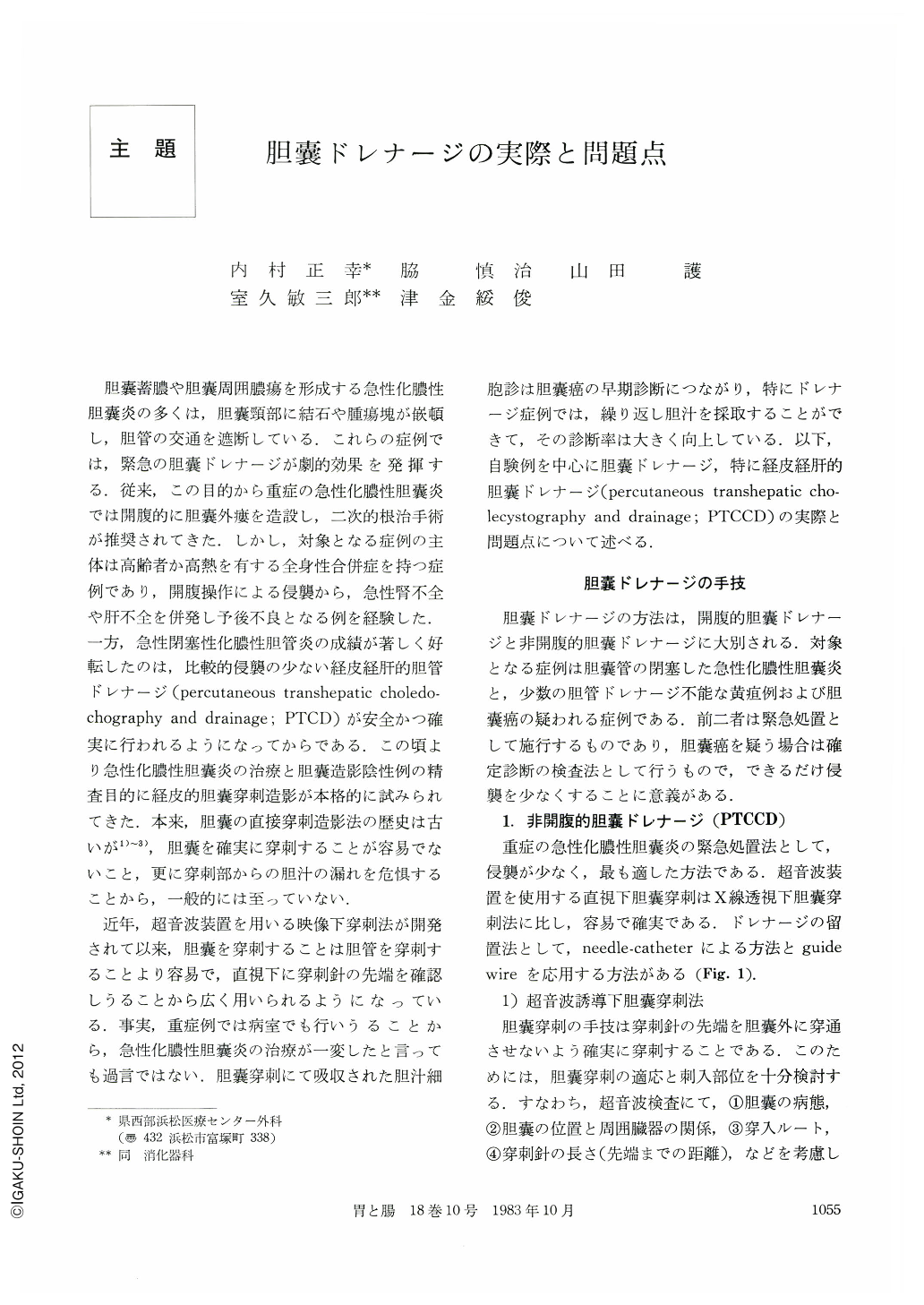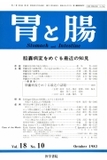Japanese
English
- 有料閲覧
- Abstract 文献概要
- 1ページ目 Look Inside
胆囊蓄膿や胆囊周囲膿瘍を形成する急性化膿性胆囊炎の多くは,胆囊頸部に結石や腫瘍塊が嵌頓し,胆管の交通を遮断している.これらの症例では,緊急の胆囊ドレナージが劇的効果を発揮する.従来,この目的から重症の急性化膿性胆囊炎では開腹的に胆囊外瘻を造設し,二次的根治手術が推奨されてきた.しかし,対象となる症例の主体は高齢者か高熱を有する全身性合併症を持つ症例であり,開腹操作による侵襲から,急性腎不全や肝不全を併発し予後不良となる例を経験した.一方,急性閉塞性化膿性胆管炎の成績が著しく好転したのは,比較的侵襲の少ない経皮経肝的胆管ドレナージ(percutaneous transhepatic choledochography and drainage;PTCD)が安全かつ確実に行われるようになってからである.この頃より急性化膿性胆囊炎の治療と胆囊造影陰性例の精査目的に経皮的胆囊穿刺造影が本格的に試みられてきた.本来,胆囊の直接穿刺造影法の歴史は古いが1)~3),胆囊を確実に穿刺することが容易でないこと,更に穿刺部からの胆汁の漏れを危惧することから,一般的には至っていない.
近年,超音波装置を用いる映像下穿刺法が開発されて以来,胆囊を穿刺することは胆管を穿刺することより容易で,直視下に穿刺針の先端を確認しうることから広く用いられるようになっている.事実,重症例では病室でも行いうることから,急性化膿性胆囊炎の治療が一変したと言っても過言ではない.胆囊穿刺にて吸収された胆汁細胞診は胆囊癌の早期診断につながり,特にドレナージ症例では,繰り返し胆汁を採取することができて,その診断率は大きく向上している.以下,自験例を中心に胆囊ドレナージ,特に経皮経肝的胆囊ドレナージ(percutaneous transhepatic cholecystography and drainage;PTCCD)の実際と問題点について述べる.
The objective of the drainage of the gallbladder is to make a differential diagnosis of the diseases of the gallbladder and the treatment of acute suppurative cholecystitis. Particularly, cholecystography and bile cytology contribute to detecting early carcinoma of the gallbladder. Seventy-five cases of drainage of the gallbladder and percutaneous transhepatic cholecystography and drainage (PTCCD) conducted at the Hamamatsu Medical Center over the past 11 years were studied and their technique and defects evaluated. The techniques used in puncture of the gallbladder are the use of the image intensification and method ultrasonically guided. The latter is used for all cases recently. Out of the 75 cases, bile cytology was conducted in 46 and 13 cases were diagnosed as carcinoma of the gallbladder and ten cases (76.9%) were classified as that of Class IV to V. On the other hand, those serious cases of acute suppurative cholecystitis which needed emergency gallbladder drainage during the same period were 49. Moreover, 42 cases of those which underwent drainage were: 15 operative drainage and 27 non-operative drainage cases. The occurrence of complications in the former postoperatively was 20.0% while for the latter was only 11.1%. The clinical effectiveness of drainage is evident and a dramatic improvement in the condition was noticed. The technical problems are that of avoiding the upper portion of the needle to move out of the gallbladder and to design a method of preventing the drainage tube to slip out of the gallbladder. If the method of PTCCD becomes safe and dependable, its range of usage will be widened and will contribute greatly to the improvement of curing carcinoma of the gallbladder.

Copyright © 1983, Igaku-Shoin Ltd. All rights reserved.


